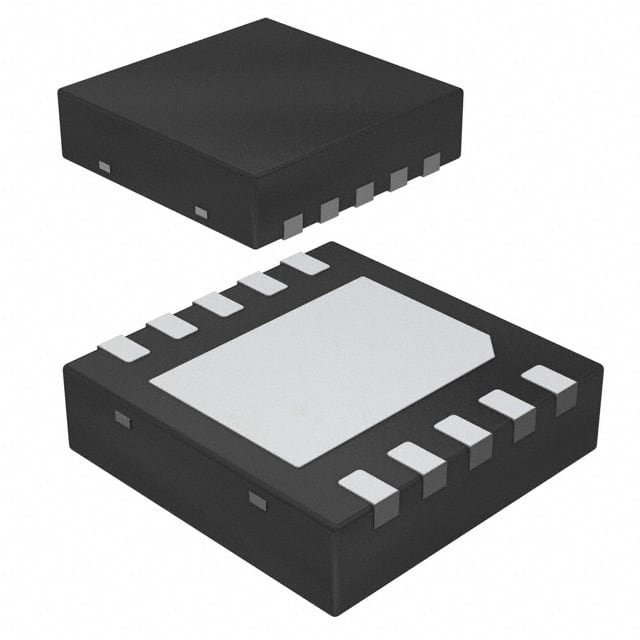Xem thông số kỹ thuật để biết chi tiết sản phẩm.

DAC104S085CISDX
Product Overview
Category
DAC104S085CISDX belongs to the category of digital-to-analog converters (DACs).
Use
This product is used to convert digital signals into analog signals. It finds applications in various electronic devices where precise analog output is required.
Characteristics
- High precision: DAC104S085CISDX offers high-resolution conversion, ensuring accurate analog output.
- Low power consumption: The device operates efficiently with low power requirements.
- Small package size: The compact design allows for easy integration into different electronic systems.
- Wide voltage range: DAC104S085CISDX supports a wide input voltage range, making it versatile for various applications.
Package and Quantity
The DAC104S085CISDX is available in a small outline integrated circuit (SOIC) package. It is typically sold in reels containing a specific quantity, usually 250 or 1000 units per reel.
Specifications
- Resolution: 10 bits
- Number of Channels: 4
- Input Voltage Range: 0V to Vref
- Output Voltage Range: 0V to Vref
- Operating Temperature Range: -40°C to +125°C
- Supply Voltage: 2.7V to 5.5V
- Power Consumption: <1mW
Pin Configuration
The DAC104S085CISDX has a total of 16 pins, each serving a specific function. The pin configuration is as follows:
Pin 1: VDD
Pin 2: VREF
Pin 3: AGND
Pin 4: AOUT1
Pin 5: AOUT2
Pin 6: AOUT3
Pin 7: AOUT4
Pin 8: DGND
Pin 9: DIN
Pin 10: SCLK
Pin 11: SYNC
Pin 12: LDAC
Pin 13: CLR
Pin 14: GND
Pin 15: VDD
Pin 16: VDD
Functional Features
- High-speed conversion: DAC104S085CISDX offers fast conversion rates, enabling real-time analog output.
- Serial interface: The device supports a serial interface for easy integration with microcontrollers and other digital systems.
- Power-down mode: It includes a power-down mode to conserve energy when not in use.
- Output voltage range selection: Users can configure the output voltage range according to their specific requirements.
Advantages and Disadvantages
Advantages
- High precision and accuracy
- Low power consumption
- Compact package size
- Wide voltage range compatibility
- Fast conversion speed
Disadvantages
- Limited resolution (10 bits)
- Requires external voltage reference (VREF)
Working Principles
The DAC104S085CISDX operates by converting digital input signals into corresponding analog voltages. It utilizes an internal digital-to-analog conversion technique to achieve accurate analog output. The device receives digital data through its serial interface and converts it into analog voltages based on the provided reference voltage (VREF). These analog outputs can then be used as inputs for various analog circuits or devices.
Application Field Plans
The DAC104S085CISDX finds applications in various fields, including:
- Audio equipment: It can be used in audio amplifiers, mixers, and digital audio workstations to convert digital audio signals into analog signals for playback or recording purposes.
- Industrial automation: The device is suitable for industrial control systems, where precise analog outputs are required for controlling motors, valves, and other components.
- Test and measurement instruments: It can be integrated into test equipment such as signal generators and data acquisition systems to generate accurate analog signals for testing and analysis purposes.
- Communication systems: DAC104S085CISDX can be utilized in communication systems to convert digital signals into analog signals for transmission or modulation purposes.
Alternative Models
Here are some alternative models that offer similar functionality:
- DAC0832
- MCP4921
- MAX5216
- AD5620
These models provide comparable features and can be considered as alternatives to the DAC104S085CISDX.
In conclusion, the DAC104S085CISDX is a high-precision digital-to-analog converter with multiple channels and a compact package size. It offers fast conversion rates, low power consumption, and wide voltage range compatibility. While it has limited resolution and requires an external voltage reference, its advantages make it suitable for various applications in audio equipment, industrial automation, test and measurement instruments, and communication systems. Additionally, alternative models such as DAC0832, MCP4921, MAX5216, and AD5620 can be considered as alternatives to the DAC104S085CISDX.
Liệt kê 10 câu hỏi và câu trả lời thường gặp liên quan đến ứng dụng DAC104S085CISDX trong giải pháp kỹ thuật
Sure! Here are 10 common questions and answers related to the application of DAC104S085CISDX in technical solutions:
Question: What is DAC104S085CISDX?
- Answer: DAC104S085CISDX is a digital-to-analog converter (DAC) IC manufactured by Texas Instruments.Question: What is the resolution of DAC104S085CISDX?
- Answer: The DAC104S085CISDX has a resolution of 10 bits, which means it can convert digital input signals into analog output signals with 1024 possible voltage levels.Question: What is the operating voltage range of DAC104S085CISDX?
- Answer: The operating voltage range of DAC104S085CISDX is typically between 2.7V and 5.5V.Question: What is the maximum output current of DAC104S085CISDX?
- Answer: The maximum output current of DAC104S085CISDX is 2 mA.Question: Can DAC104S085CISDX be used in both single-ended and differential output configurations?
- Answer: Yes, DAC104S085CISDX supports both single-ended and differential output configurations.Question: Does DAC104S085CISDX have an internal reference voltage?
- Answer: No, DAC104S085CISDX does not have an internal reference voltage. An external reference voltage needs to be provided for accurate conversions.Question: What is the power consumption of DAC104S085CISDX?
- Answer: The power consumption of DAC104S085CISDX depends on the operating conditions but is typically around 0.5 mW.Question: Is DAC104S085CISDX suitable for low-power applications?
- Answer: Yes, DAC104S085CISDX is designed to be power-efficient and is suitable for low-power applications.Question: Can DAC104S085CISDX operate in harsh environments?
- Answer: DAC104S085CISDX has a wide operating temperature range of -40°C to +125°C, making it suitable for use in harsh environments.Question: What are some typical applications of DAC104S085CISDX?
- Answer: DAC104S085CISDX is commonly used in industrial automation, process control, motor control, audio equipment, and other applications where precise analog voltage outputs are required.
Please note that the answers provided here are general and may vary depending on specific application requirements. It is always recommended to refer to the datasheet and consult with technical experts for accurate information.

